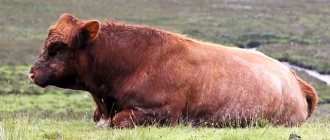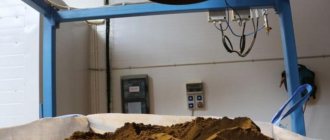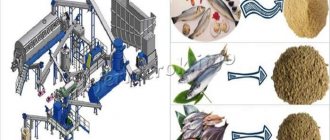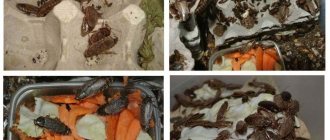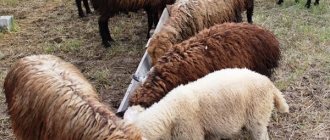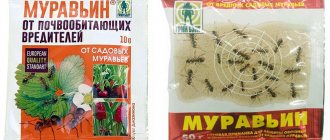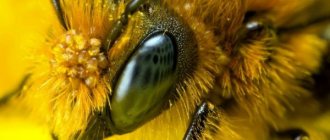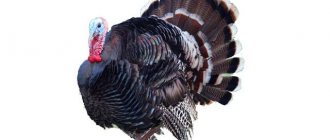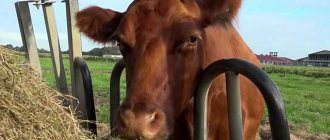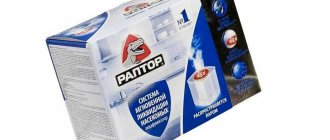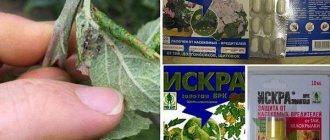Agriculture is the main industry where fishmeal is used. As a valuable component of mixed feed, its nutrients, vitamins and microelements help accelerate the growth and development of pigs, cows and birds. For gardeners and vegetable gardeners, fertilizer made from waste soft tissues, bones and shells of the inhabitants of the seas and oceans serves as an indispensable assistant in the cultivation of various crops.
Fishmeal is a source of huge amounts of vitamins and minerals
Qualitative and quantitative composition
Fishmeal is a substance in the form of powder or granules obtained by drying and grinding waste from fish processing, as well as from residues from the cutting of marine mammals and seafood. From six tons of muscles, bones and adipose tissue, about one ton of finished product is obtained, the quality of which depends on the composition of the raw materials. Usually this is anchovy, pollock, flounder, herring, mackerel, sardine, meat of whales, pinnipeds and crustaceans. Flour with a fat mass fraction of more than 8% necessarily contains stabilizing additives of the antioxidant ethoxyquin.
In fact, fishmeal is the remains of fish and other marine life ground into flour.
Products manufactured in the Russian Federation must meet the requirements of GOST 2116–2000 “Food meal from fish, marine mammals, crustaceans and invertebrates.” For research, samples are taken from several batches with different production times. This allows you to identify violations before they go on sale.
The chemical composition of the product is given in the table:
| Substance | Content, % |
| Protein | from 60 to 62 |
| Fat | from 7 to 12 |
| Humidity | from 6 to 8 |
| Ash | 14,7 |
| Calcium | 5,7 |
| Phosphorus | 2,85 |
| Salt | 1,6 |
The main indicator of the quality of fish bone meal is fat content. The correct balance of fats in the body stimulates the production of antibodies that fight pathogenic microbes. Proteins are sources of easily digestible protein, which is 95% digestible. Flour includes proteins and amino acids, is rich in vitamins A, B, D, E, contains calcium, phosphorus, iron, iodine and successfully complements plant-based components in animal feed.
Calcium is responsible for the formation of bone tissue, phosphorus accelerates growth, iodine is necessary for the thyroid gland. Vitamin A is involved in redox processes during the formation of new cells. B vitamins are responsible for the functioning of the nervous and cardiovascular systems, vitamin D promotes the absorption of phosphorus. A number of amino acids, such as cystine, methionine, lysine and threonine, are involved in the construction of muscle fibers. Polyunsaturated acids are responsible for the production of progesterone, which has a beneficial effect on reproductive abilities.
What is bone meal?
Before considering the properties of the product, you need to find out what bone meal is and what it is obtained from. Bone meal is based on crushed fish or animal bones. Fertilizer is obtained by grinding livestock bones, and sometimes horns, hooves, shells or blood. At the end of the grinding process, the bones become dry and appear as a fine powder with a flesh-colored, pale yellow color.
Bone meal is made exclusively from organic matter and is safe for plants, pets and people. The product is not prone to deposition in the tissues of plants and fruits.
The excess of bones led to a decrease in the cost of production. Due to its low price, fertilizer is often used in large areas.
Bone meal is made exclusively from organic matter.
Environmental safety has been confirmed by extensive use in various countries around the world, including European ones. Countries located on the sea coasts more often use fish ridge meal.
Bone meal supplement has a rich mineral composition and biologically active components. The composition contains proteins, including cystine, methionine and lysine. The abundance of proteins allows the use of flour when feeding animals.
The fertilizer is beneficial for plants, as it has a rich composition of minerals, including:
- iodine;
- cobalt;
- manganese;
- copper;
- iron.
This is only part of what is an integral part of the fertilizer, because the most important components are phosphorus and nitrogen, since they are the main nutrients necessary for the growth of any plant.
Product production technology
The production of fishmeal is one of the important areas of fish processing in the national economy. Every year, the world produces from 5 to 7 million tons of these necessary products, which are produced in one of two main ways:
- Commercial. The process is carried out directly on the ship from the caught catch. Unfrozen fish and waste from its cutting are taken. The raw materials are not the most selective, but the quality of such a product is much higher, since the composition does not contain chemical additives. The main disadvantage is that the finished flour contains from 2 to 5% sand impurities that get caught in the net.
- Coastal. Fish caught and frozen during fishing are processed in special factories on land. This is more effective in terms of average daily processing of raw materials, but the main disadvantage is the presence of foreign chemical components. The maximum possible protein content is about 70%, but in reality these values are rare.
There are a couple of well-known methods for producing fishmeal: processing fish waste directly on the ship and processing on land.
The manufacturing technology has not undergone significant changes over the years and is carried out in several stages:
- Cleaning the fish mass from debris and dirt. Special devices are used to remove metal impurities.
- Grinding of raw materials. Fish cutters and crushers of various designs make it easier to separate fat and water. The resulting fragments are easily exposed to high temperatures.
- Cooking. Crushed raw materials are loaded into heated drums equipped with mixing blades and processed for about 30 minutes until a viscous semi-liquid mass is obtained.
- Pressing. The use of devices of various designs allows you to separate the boiled composition into fat, water and protein components. The result is a pulp with a moisture content of about 50%, and the fat-containing liquid is collected to obtain fish oil.
For quite a long time, the process and technology of fishmeal production have not changed.
- Drying. There are two possible ways to remove moisture from pulp: fire and steam. In the first case, the resulting flour becomes black, because the protein burns out under the influence of flue gases. When processed with hot steam, higher quality is achieved: protein reserves are practically not lost, but the process itself is associated with energy consumption and increases the cost of production.
- Grinding dried minced meat. The mass is ground in rotary crushers and sifted. The size of the grains depends on humidity.
- Packaging in containers. Electronic or mechanical scales are used for weighing, and bags made of fabric, polypropylene, multi-layer paper, jute fiber, bags made of polymer materials or special containers are used for packaging.
The production technology is simple, but it is problematic to implement it at home, because special equipment is required: presses, dryers, conveyors, crushers. This affects the quality and cost of the finished product.
Direct drying method
Fishmeal is prepared in special drums with mixing blades. Before loading crushed raw materials, they are heated to a temperature of 85-90 degrees. Initially, the fish is boiled for about half an hour. The duration of hot processing directly depends on the lipid content of the raw material. After cooking is completed, pressure is built up in the drum, which is gradually increased. The drying time is usually about 4 hours, if the fish initially contains 10-12% water.
After the flour is ready, it is removed from the drum with a stirrer and fed to a press to partially remove the fat. The resulting briquettes are crushed in a special mill and passed through magnets to remove any microscopic particles of metal dust. Next, the flour is packed into bags or bags and sent to the warehouse.
Global Market Overview
Flour is produced in varying quantities by almost all countries that have sea or ocean borders. Its appearance and quality depend on the type of fauna in a particular fishing zone. For example, Chile uses horse mackerel and anchovy as raw materials, and Japan uses sardines. Peru, Mauritania, Thailand and Morocco are considered the world's largest producers.
First place in the ranking belongs to Peru. But when trying to analyze why the amount of flour products produced annually in this country (more than a million tons) exceeds the volume of live fish caught, a number of questions arise about the use of chemical additives. In second place is Mauritania, which, when processing various varieties of fish, achieves a protein content of 62 to 67%.
Fishmeal is produced in all countries where there is access to the sea or ocean
Imported flour is expensive, so Russian farmers are increasingly inclined to purchase products from domestic producers. Its price is lower, and its quality is practically not inferior to its Chilean and Peruvian counterparts.
For indoor plants
The soil for most house flowers is a universal peat-based mixture. It is similar to a plant mixture for seedlings. Therefore, the rate of adding bone meal is the same. For every liter of nutrient soil you will need 1 tablespoon (without a slide) of fertilizer.
Important ! Bone meal should not be used when planting or caring for indoor azaleas. Fertilizing neutralizes the soil reaction, and representatives of the Heather family grow in an acidic environment. For the same reason, this fertilizer is not used when growing the following garden shrubs:
- rhododendrons,
- Erica,
- andromeda,
- blueberries
- heather
Application for livestock needs
The product of processing fish waste is widely used in various sectors of agriculture. Its use in fur farming helps improve the consumer qualities of rabbit and nutria fur. Fish feed meal has proven itself well on farms raising pigs, cows, chickens, quails and other birds.
When feeding animals, pay attention to the following features of the product:
- Compound. Real flour contains calcium, phosphorus and salt. The presence of feathers, meat and bone waste, soybean meal, and urea makes it useless to follow the recommended dosages.
- Freshness. When stored in hot, unventilated warehouses or in the open sun, fat oxidation occurs, as evidenced by the smell of rancid old lard. This product is prohibited for consumption because it causes irreversible changes in the digestive organs and ends in death.
When used in poultry farming, fishmeal allows chicks to grow quickly, gain weight, and also supports immunity. In the diet of chickens, the additive ranges from 5 to 10%, for adult birds - from 2 to 5%. Chickens lay eggs more often and digest food better, and the eggs become more nutritious. Healthy broilers gain weight well. It is important to balance the diet and sharply reduce the amount of additives 2 weeks before slaughter, otherwise chicken meat and eggs will acquire a specific taste and smell.
Fishmeal is a necessary component of feed in livestock farming, influencing the proper and complete development of livestock and poultry.
The effect of use in pig farming is expressed in improving the appetite and immunity of the livestock. For piglets, dietary supplements from 5 to 15% are recommended, for adults - from 2 to 4%. In sows, the birth rate and survival rate of offspring increases, boars become more productive, and piglets with gilts develop faster and gain weight. Fresh fish waste is also used as feed, and 2 months before slaughter it is excluded from the menu.
Fish bone meal is beneficial for cattle at all stages of development. The share in the feed of calves and young animals ranges from 3 to 7%, for adult animals - from 1 to 3%. Daily supplements to the diet of pregnant cows increase fertility, improve the health of offspring, improve the quality of milk, and calves grow well. Meat breeds quickly develop and gain weight, have blooming health and good digestion. Sire bulls are fertile and hardy, have strong immunity. 2 months before slaughter, the use of the additive is stopped.
Domestic cats and dogs readily consume fishmeal as part of ready-made food mixtures, with dosage instructions indicated by the manufacturer on the packaging. A beneficial effect on immunity and development, strengthening bones and muscles, improving the quality of wool is achieved due to the high content of fats, vitamins and amino acids.
Use in crop production
The use of fishmeal in gardens has a beneficial effect on the composition of the soil, helps to increase productivity and improve the quality of vegetables and fruits. Fertilizer enhances cellular metabolic processes, and during the growing season replenishes losses of nitrogen and phosphorus. It is also possible to apply one or two weeks after the end of harvesting, then the powder or granules are evenly scattered over the area before digging.
It is believed that meal from fish bones contains more phosphorus, and from soft parts - nitrogen. All useful components will remain in the soil until spring and will feed the crops when planted next year. The properties of flour are enhanced when used together with wood ash and nitroammophos. This fertilizer is useful for nightshade crops, the yield of which immediately responds to the lack of phosphorus in the soil.
Fishmeal is also used in crop production as a soil fertilizer.
When using fishbone meal to feed various garden crops, follow simple rules:
- Potato. Fertilizer is applied to the soil a week before the planned planting of seed. Consumption is 100 g per 1 sq. meter of territory.
- Tomatoes. During the process of planting seedlings, up to 40 g of flour is placed in each hole. To enhance the effect, it is recommended to add bird droppings.
- Fruit or ornamental trees. Fertilizing is used for adult plants once every 3 years and at a dosage of up to 200 g of fertilizer per 1 square meter. meter of the surface of the tree trunk circle.
- Berries. In early spring, add 100 g of flour per 1 square meter. meter of plantation, and when transplanting bushes and propagating by cuttings, the consumption is reduced to 50 g per hole. Additionally, bird droppings are used.
- Bulbous plants and flowers. Fertilize in the spring at the rate of 50 g of flour per 1 square meter. meter of soil. Perennials respond well to such fertilizing, and when planting annual crops, it is applied under digging.
It is necessary to observe the correct proportions of fertilizer for certain types of plants
Fertilizer based on fish bone meal is well suited for loosening black soil, loam and calcareous soils. The indication for use is a lack of phosphorus and calcium compounds. Therefore, before fertilizing, a soil analysis is performed to determine the level of acidity and composition of macroelements.
An excess of nutrients is contraindicated in the same way as a deficiency, and has a negative impact on the quality and quantity of the harvest. On clayey and swampy soils, as well as in sandy soil conditions, flour is poorly absorbed by the root system of plants, and its use is useless.
Fish fertilizer
Nowadays, fertilizer from fish waste is in great demand. Flour is a multifunctional fertilizer that contains all the necessary micro- and macroelements for plants. The use of fish powder as fertilizer allows you to obtain the following results:
Significantly accelerate plant growth.- Increase its flowering, and as a result increase productivity.
- Increase the number of fruits, increase weight and significantly improve taste.
- Helping plants adapt to adverse weather conditions.
The harmlessness of this product completely eliminates the possibility of overdose.
Basic storage rules
Stacks of bags or containers with fish-bone meal are kept in well-ventilated areas that have been treated for pests. Storage areas are protected from sunlight, the negative effects of moisture and heat. Storage periods are recommended by manufacturers and are:
- 1 year - for products with fat content less than 14%;
- 6 months - for flour containing more than 14% fat and no more than 8% water.
As storage time increases, product characteristics deteriorate. So, in a month under normal conditions the amount of protein decreases by 12%. When maintaining negative temperatures, protein losses are minimal, but the stability of the powder is significantly reduced. Crude fat is oxidized, its mass fraction is reduced by a third, and this is the main reason for the loss of product quality.
To properly store fishmeal, it is necessary to observe the temperature regime and monitor the humidity in the room
In storage rooms, optimal air humidity should be maintained from 60 to 70%. In damp, unventilated warehouses, flour is actively saturated with water vapor, and in excessively dry warehouses, on the contrary, it releases them. At high humidity and temperature, vitamins are destroyed, and as a result of the interaction of components, free fatty acids, peroxide compounds and ammonia are released. These unwanted chemical reactions turn healthy flour into a harmful and even dangerous substance, so the product cannot be stored for long periods of time.
